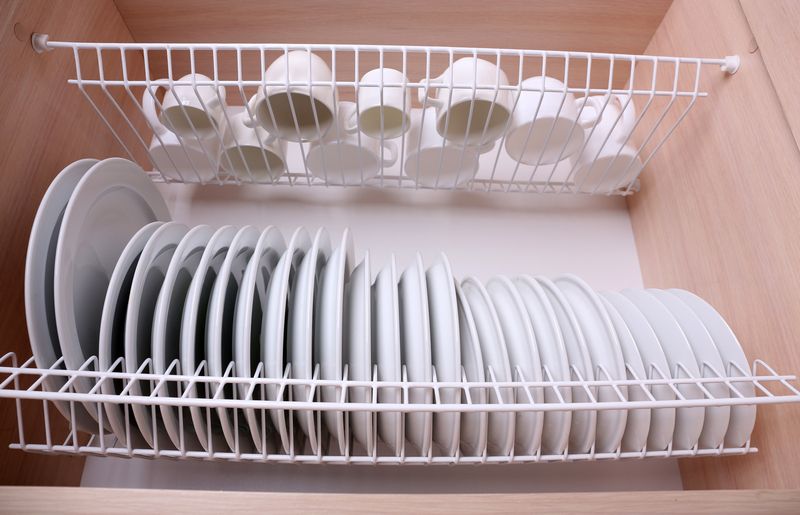Unlock the Mystery of Eliminating Burnt Residue from Stovetops
Posted on 03/06/2025
Unlock the Mystery of Eliminating Burnt Residue from Stovetops
Burnt residue on your stovetop is an all-too-common kitchen nuisance. Whether it's the result of a bubbling over pot of pasta or a forgotten pan, these stubborn stains can seem impossible to remove. Yet, with the right knowledge and approach, eliminating burnt residue from stovetops can be simple, effective, and even satisfying. In this comprehensive guide, we'll explore the science behind burnt-on grime, the most effective cleaning techniques, and will arm you with the best tips to maintain a spotless stove.
Understanding Burnt Residue: Why Is It So Difficult to Remove?
Have you ever wondered why burnt residue on your stovetop clings so tenaciously? The answer lies in a combination of high heat, food particles, and grease. When food and sauces spill onto a hot stovetop, they rapidly lose moisture, leaving behind a tough, carbonized layer. This layer becomes chemically bonded to the surface, making simple wipes ineffective. Moreover, continual cooking without addressing these spills allows layers to build up, further intensifying the challenge.
- Carbonization: Prolonged exposure to high heat causes sugars, proteins, and fats to bond into a blackened crust.
- Grease: Melting fats from cooking act as both a glue and a protective layer for burnt particles.
- Surface Type: Ceramic, glass, and stainless steel stovetops each respond differently to burnt residues, requiring tailored solutions.
Understanding this process is crucial to strategizing how to eliminate burnt residue from stovetops effectively.

Step-by-Step Guide to Remove Burnt-On Stains from Stovetops
A systematic approach can simplify the task and prevent surface damage. Let's break down the best methods for removing burnt residue from any stovetop.
1. Gather Your Cleaning Supplies
- Non-abrasive sponges or microfiber cloths
- Soft scrubbing pad or plastic scraper
- Baking soda
- White vinegar
- Lemon juice (optional for extra power and smell)
- Dish soap
- Old toothbrush
- Spray bottle (for applying liquids)
- Gloves (to protect your hands)
2. Let the Stovetop Cool Completely
Never attempt to clean burnt residue while the stovetop is hot. Wait until the surface is entirely cool before starting. This ensures safety and prevents further damage to both you and the stovetop material.
3. Loosen Large Burnt Chunks
- Use a plastic scraper or the edge of a soft spatula to gently remove any large chunks or flakes of burnt residue.
- Be careful not to scratch glass or ceramic cooktops--avoid metal utensils.
4. Create a Natural Cleaning Paste
For a powerful yet gentle solution, mix baking soda with a small amount of water to create a thick paste. This classic method is highly effective for removing burnt residue from stovetops due to the mild abrasiveness of baking soda, which dissolves grime without scratching most surfaces.
5. Apply the Paste Generously
- Spread the baking soda paste liberally over scorched or stained areas.
- Let it sit for at least 20-30 minutes; for tougher stains, up to an hour.
- This allows the paste to work its way into the burnt crust and break up molecular bonds.
6. Spray With Vinegar
White vinegar is a powerful degreaser and natural acid. Spritz the paste with vinegar from a spray bottle and observe the fizzing reaction, which helps lift away residue.
- Allow the vinegar to soak for another 15 minutes for stubborn cases.
7. Scrub and Wipe Clean
- Use a non-abrasive sponge, a scrubbing pad, or an old toothbrush to gently scrub the residue.
- Wipe away loosened grime with a damp microfiber cloth.
- Repeat as necessary until the burnt stains have disappeared.
8. Rinse and Dry
Thoroughly rinse the stovetop with a clean, damp cloth to remove all paste and residue. Finish by drying the surface with a fresh towel to prevent streaks or water spots.
Special Considerations for Different Stovetop Types
Glass or Ceramic Stovetops
- Use only non-abrasive tools to avoid scratching.
- Special stovetop cleaner creams are available for more severe cases.
- A razor blade scraper (held at a 45-degree angle) may be used very carefully to lift stuck-on residue. Always refer to your manufacturer's guidelines before using blades.
Stainless Steel Stovetops
- Follow the grain of the steel while cleaning to prevent visible scratches.
- A mix of vinegar and water can help dissolve burnt-on grease without damaging the shine.
- Polish with a small amount of olive oil afterward for a streak-free finish.
Electric Coil Stovetops
- Remove coils and drip pans if possible; wash pans in warm, soapy water.
- Use the baking soda and vinegar method for stuck-on residue on the pans and surface.
- Ensure everything is completely dry before reassembling to avoid electrical hazards.
Gas Stove Grates
- Soak removable grates in hot, soapy water or in a mixture of water and vinegar.
- For severe residue, form a paste with baking soda and water and scrub with a soft brush.
- Rinse well and let the grates dry fully before reinstalling.
Natural Remedies for Cleaning Burnt Stovetop Residue
If you prefer eco-friendly cleaning methods, there are several natural options to eliminate burnt residue from stovetops without harsh chemicals.
- Lemon juice and salt: The citric acid in lemon juice helps break down residue while salt acts as a gentle exfoliant. Simply apply both to the affected area, scrub gently and wipe clean.
- Hydrogen peroxide: For persistent stains, mix with baking soda to form a paste. Let it sit, then scrub and rinse thoroughly.
- Steam treatment: Fill a heatproof dish with water and bring it to a boil on the stove. The resulting steam will help loosen burnt residue, making cleaning effortless.
These solutions are not only safe for most stovetop surfaces but also help maintain an odor-free kitchen environment.
The Role of Commercial Cleaners in Tackling Stubborn Burnt Residue
Sometimes, commercial products may be necessary for severe cases. Choose cleaners formulated specifically for your stovetop type. Popular options include:
- Bar Keepers Friend
- Weiman Stovetop Cleaner
- Cerama Bryte
- Easy-Off Kitchen Cleaner (for heavy-duty jobs)
Tip: Always follow product instructions carefully and use gloves to protect your skin. Test the cleaner on a small, inconspicuous spot before using it on the entire surface.
Proactive Tips to Prevent Burnt Residue Build-Up
Prevention is the best way to keep your stovetop pristine. Implement these simple kitchen habits to minimize the occurrence of burnt-on spills:
- Wipe spills immediately with a damp cloth while the surface is still warm (but not hot!).
- Use drip trays or liners on electric coil burners and gas stove grates.
- Regularly remove and clean burner caps and grates.
- Conduct weekly deep cleaning sessions to intercept residue before it carbonizes.
- Avoid using abrasive cleaning pads, which can scratch and worsen stains over time.
By including these habits in your routine, you can eliminate burnt residue from your stovetop before it becomes a major cleaning ordeal.
Safety Precautions When Cleaning Your Stovetop
Safe cleaning is as important as effective cleaning. Keep these safety pointers in mind:
- Always unplug or switch off electricity before cleaning electric stovetops.
- Ensure gas is turned off for gas stoves.
- Ventilate your kitchen when using commercial products or vinegar solutions.
- Never mix ammonia-based products with bleach.
- Consider wearing gloves and eye protection when scrubbing tough stains.

Frequently Asked Questions (FAQs)
Can baking soda damage my stovetop?
Baking soda is safe for most stovetop surfaces. However, avoid aggressive scrubbing, especially on glass or ceramic, to prevent fine scratches.
How often should I deep clean my stovetop?
For the best results and to prevent burnt residue buildup, perform a deep clean at least once a week. Frequent cooks may want to clean even more often.
Can I use steel wool on burnt-on stains?
No. Steel wool is too abrasive for most stovetops and can cause lasting damage. Opt for non-abrasive tools as recommended.
What is the easiest way to remove burnt residue from a glass stove?
Use a combination of baking soda, vinegar, and a soft cloth. For tougher spots, a razor blade scraper used carefully at a shallow angle is effective.
Conclusion: Enjoy a Spotless, Burnt-Free Stovetop!
Knowing how to eliminate burnt residue from stovetops is an essential kitchen skill. With these proven techniques--ranging from natural remedies to professional cleaners--you can tackle even the most persistent burnt stains with confidence. Regular cleaning, immediate spill response, and surface-specific care will keep your stovetop gleaming and hygienic for years to come.
Embrace these expert tips and unlock the mystery of a spotless, residue-free stovetop today!




